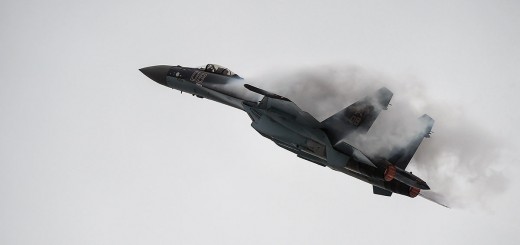Science SEOSAT-Ingenio’s lost promise for Earth observation
Spain’s satellite, the SEOSAT-Ingenio, was billed as the latest in high resolution land imaging technology. Originally, we presented what it would have done. But its launch vehicle, a Vega rocket called VV17, failed.

The rocket was carrying two satellites: Spain’s SEOSATO-Ingenio for ESA and TARANIS for the French space agency, CNES.
ESA says the first three stages “functioned nominally [sic]” until about eight minutes after departure from the launch pad. “At that time, a degraded trajectory was detected, followed by a loss of control of the vehicle and the subsequent loss of the mission.”
Initial investigations suggest there was a problem with the fourth-stage of the rocket. The launcher fell in a completely uninhabited area, according to an ESA press release.
Tough year already
The SEOSAT-Ingenio spacecraft is enclose in its fairing, ready for launch It’s been a tough year for space, as it has been for us all on Earth. The COVID-19 pandemic has slowed engineering developments and pushed back launch dates. But it hasn’t stopped some of the biggest and most ambitious missions to date — notably, three international missions to Mars.
There have been countless, smaller satellite launches as well.
And Spain’s high-resolution land imaging mission called SEOSAT-Ingenio (Spanish Earth Observation Satellite — Ingenuity) was to be a highlight for European science and technology.
Prior to its scheduled launch on November 17, DW presented what SEOSAT-Ingenio would do in an article originally published on November 13. That article follows:
The last phases of a mission of this size are “very intense,” says Alex Popescu, SEOSAT project manager. It’s all about the final stages of what’s known as “integration and test” before the launch. Usually, teams work together, all in the same location, but the pandemic has changed that.
“The pandemic has blocked all the usual procedures, so we had to quickly put in place new ways for remote access and remote working. And it’s been difficult, but impressive to see how well it has worked,” Popescu says.
Two small teams were at Kourou in French Guiana, Europe’s main launch location, when DW spoke to Popescu, who was there as well. But everyone else, from the launch support team to those working on the satellite’s early phases in orbit, they were dotted around Europe.
“We’re basically working in remote,” says Popescu. “It’s very different from what would normally happen.”
Spain in high-resolution
The “jewel” of SEOSAT is its dual camera, says Popescu.

The SEOSAT-Ingenio spacecraft is enclose in its fairing, ready for launch
The SEOSAT-Ingenio spacecraft is enclose in its fairing, ready for launch
It will deliver optical images of Earth in black and white — otherwise known as the panchromatic band — at a high-resolution of 2.5 meters (8 feet).
And color images in four multispectral bands — red, blue, green, and near-infrared — at a resolution of 10 meters.
SEOSAT’s focus is very much Spain, but it will also observe North Africa and South America.
Its high-resolution images will be “ideal,” says Popescu, for applications in urban development, cartography and environmental monitoring of water and land use, woodland cover, agriculture and tackling climate change and natural disasters, such as wildfires and floods — and the data will be open to both public and commercial use.
“Space missions offer a global view,” says Popsecu, “you are not confined to a local area, and everything is linked. So, first, by looking at North Africa and South America, which has historical and economic ties to Spain, it will benefit co-operations between countries. But, also, by monitoring neighborhoods closer and further away, you can better understand how changes in one area can affect changes at home or in other areas. And that will be of big value.”
Tricks up SEOSAT’s sleeve
Panchromatic images are useful for mapping and monitoring urban land usage. They let you see building activity, like structures and new roads, and for that a higher resolution helps.
Color images, meanwhile, are useful for monitoring vegetation, its health or degradation, water quality, and minerals and other resources. And because it’s felt that such details seldom change very quickly, “you do not need submeter accuracy,” says Popescu.
Example of the kind of land surface images thsat the SEOSAT-Ingenio satellite will delive

By superimposing the higher resolution, black and white images, onto the color images, “you gain in spatial resolution,” says Popescu. “You get additional detail from the panchromatic images into the color.”
SEOSAT can also look sideways and capture images of every corner of the world every three days.
“The satellite will remain in a fixed orbit, but it can roll to the left or right like a swimmer in the water,” says Popescu, “and if you roll 45 degrees at an altitude of 670 kilometers [416 miles], you will see an area stretching 670 km.”
That could be useful for avoiding areas covered by clouds, for instance, or during emergencies when satellite programs collaborate to deliver as many images, as frequently as possible, from the affected area. So, it wouldn’t matter whether SEOSAT was directly over the emergency zone if what it delivers gets stitched together with other images to provide a bigger picture of Earth.
Adding value to existing Earth observation satellites
It all sounds very impressive on paper or, indeed, read off a screen. But fleets of Earth Observation satellites, including Europe’s own Copernicus program and its family of Sentinel satellites, 1 through 5, already offer similar land imaging capabilities. And Sentinel-6 is due for launch now as well.
“The added value is unclear, and I’d question why Spanish authorities need this capability,” says Malcolm Macdonald, a professor of satellite engineering at Strathclyde University and host of the podcast, Nibbles in Space.
“The multispectral capability seems very similar to the two Sentinel-2 spacecraft, and so many others. But if the images are well calibrated and characterized, then it could well be possible to combine the [SEOSAT] images with Sentinel-2 images and gain some added value, for example, in better temporal resolution — although, it’s kind of in the wrong orbit for that, so any added value could be intermittent.”
It’s also “curious,” says Macdonald, “that the SEOSAT bands don’t align that well with Sentinel-2.” Some do and some don’t, he says, and this may simply mean they are looking for different things, but it could mean that “if you had images from roughly the same time, you might be able to difference the response on the overlapping bands to retrieve the response in the part of the spectrum where they don’t overlap.”
Europe big on Earth observation
The Copernicus program is already one of the biggest of its kind.
Even so, Josef Aschbacher, director of Earth Observation Programs at ESA, has said SEOSAT-Ingenio “fit[s] perfectly into the European landscape of satellite missions. It is a commercial enterprise as much as a societal enterprise,” and therefore “fills an important market segment.”
It will also serve as a source of national pride at a time of when Spain has been hit so hard by the pandemic. It’s a Spanish mission, funded by Spain’s Center for Development of Industrial Technology (CDTI), it was conceived and designed in Spain by Spanish engineers, and its main instrument, that camera, was made my Spanish company, Sener — their first attempt at such high-precision optics, says Popescu.

Other technology came from European partners — French engineering supplied the camera’s mirrors, with filters from Germany and detectors from the UK. The satellite itself was done by Airbus Spain.
But this mission shows Spain can do it.
“It’s been a big challenge for Spanish industry and it’s remarkable how [everyone] came together and, basically, without much relevant experience, managed to develop and build this satellite,” says Popscu. “After all these years, I really must give credit to all the engineers across Europe, who made this achievement possible.”
SEOSAT is part of the Spanish Earth Observation Program (PNOTS), which features a complementary satellite called PAZ.
PAZ is an X-band SAR (Synthetic Aperture Radar) spacecraft, which despite its name, meaning “peace,” serves security and defense interests.
Source: Deutsche Welle – Science News | 28 November 2020
Photo: European Space Agency (ESA) SEOSAT-Ingenio (Photo by © ESA/P. Carril
Marry Watson (SCODLAND UK and USA XairForces Editor)
SPACE TECHNOLOGY NEWS
Marry.Watson90@yandex.com
Facebook.com/MarryQueenUK
















